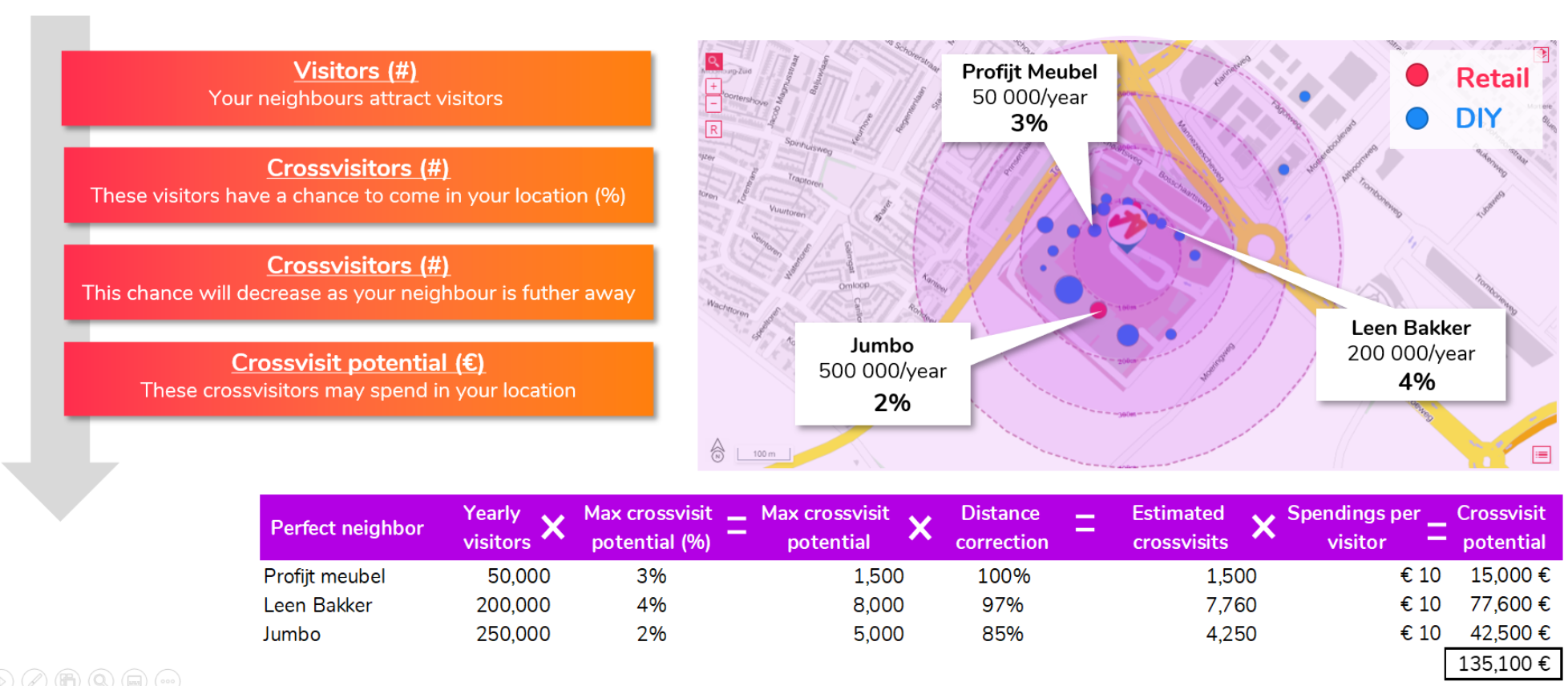How are the estimated cross-visits for local activity calculated?
Local activity are locations of which we expect that - given a certain distance - it will lead to cross-visits for your locations. These are visits the location might not have attracted as customer otherwise.
Several factors are taken into account when estimating the amount of cross-visits your location can attract:
1. The number of yearly visits to the location (can be found per local activity in Data Management)
2. The percentage of visits who are potential visits for your own location. This percentage depends on the type of location, such as education, public transport, etc.
3. The distance and urbanization of the surrounding area. The further away a location is, the less likely it is that a customer will make a cross-visit. Additionally, population density impacts willingness-to-travel. In rural areas customers have a higher willing to travel than in dense urban areas.
After estimating the amount of cross-visits, considering on all factors above, the actual cross-visit potential is calculated by multiplying the estimated cross-visits and the average spending per visits .
The image below provides an example illustrating how the factors mentioned accumulate to the cross-visit potential of three shops.

